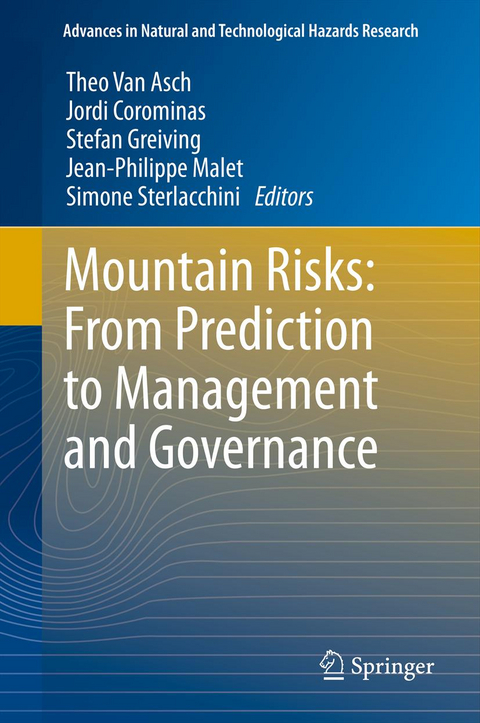
Mountain Risks: From Prediction to Management and Governance
Springer (Verlag)
978-94-007-6768-3 (ISBN)
The first part of the book focuses on new techniques for assessing the natural hazards of different types of mass movements. State-of-the-art techniques for morphological characterization and monitoring of displacements are described. Computational advances are covered to explain the process systems and to quantify the hazards of fast and slow-moving landslides.
In the second part of the book methodologies are included for assessing the impact of these natural hazards on the society in terms of risks. In this part, methodologies for defining the vulnerability of the elements at risk are shown and the use of run-out models for risk assessment of the dangerous rapid mass movements are evaluated.
The third part of the book focuses on the response of society towards the problems of hazard and risk. It highlights the role of spatial planning, early warning systems and evacuation plans for risk management. It establishes practical thresholds for acceptable and tolerable risks and emphasizes the importance of education and communication to society.
Audience
The book is of interest to a wide range of experts from related disciplines, practitioners and stakeholders to demonstrate the importance of an integrated approach for all aspects of risks in mountainous areas.
Preface.- 1. Introduction: The components of risk governance.- Part I : New techniques for assessing mass movement hazards.- 2. Innovative techniques for the detection and characterization of the kinematics of slow-moving landslides.- 3. Innovative techniques for the characterization of the morphology, geometry and hydrological features of slow-moving landslides.- 4. Techniques for the modelling of the process systems in slow and fast-moving landslides.- Part II: Methodologies to assess the impact of the natural hazards on the society in terms of risks.- 5. Methods for debris flow hazard and risk assessment.- 6. Advances in methodologies for rockfall hazard and risk assessments.- 7. Medium-scale multi-hazard risk assessment of gravitational processes.- 8. Methods for the characterization of the vulnerability of elements at risk.- 9. The importance of the lessons learnt from past disasters for risk assessment.- Part III: The response of the Society towards the problems of hazard and risk.- 10. Disaster mitigation by spatial planning.- 11. Disaster mitigation by corrective and protection measures.- 12. The relevance of legal aspects, risk cultures and insurance possibilities for risk management.- 13. The relevance of Early-Warning Systems and evacuation plans for risk management.- 14. Risk assessment: Establishing practical thresholds for acceptable and tolerable risks.- 15. The use of geo-information and modern visualization tools for risk communication.- Index.
| Reihe/Serie | Advances in Natural and Technological Hazards Research ; 34 |
|---|---|
| Zusatzinfo | 108 Illustrations, color; 35 Illustrations, black and white; XI, 413 p. 143 illus., 108 illus. in color. |
| Verlagsort | Dordrecht |
| Sprache | englisch |
| Maße | 155 x 235 mm |
| Themenwelt | Mathematik / Informatik ► Informatik ► Netzwerke |
| Naturwissenschaften ► Biologie ► Ökologie / Naturschutz | |
| Naturwissenschaften ► Geowissenschaften ► Geografie / Kartografie | |
| Naturwissenschaften ► Geowissenschaften ► Geologie | |
| Naturwissenschaften ► Geowissenschaften ► Mineralogie / Paläontologie | |
| Technik ► Maschinenbau | |
| Technik ► Umwelttechnik / Biotechnologie | |
| Wirtschaft ► Betriebswirtschaft / Management ► Allgemeines / Lexika | |
| Schlagworte | Landslide hazard • Landslide-monitoring and modelling • Risk assessement • risk governance • Risk Management |
| ISBN-10 | 94-007-6768-4 / 9400767684 |
| ISBN-13 | 978-94-007-6768-3 / 9789400767683 |
| Zustand | Neuware |
| Haben Sie eine Frage zum Produkt? |
aus dem Bereich


